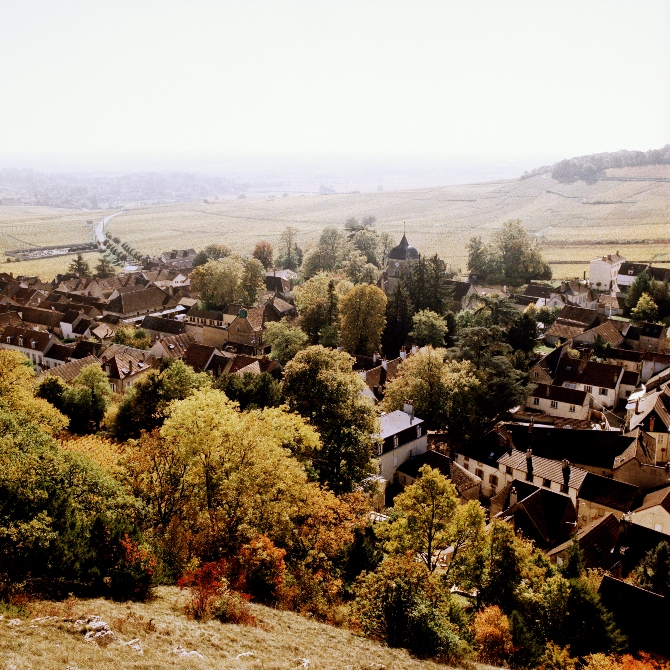Finding value in Burgundy
Author: Mark Pardoe MW

There’s more to Burgundy than the collectable and unattainable Grands Crus of the Côte d’Or. Our Wine Director, Mark Pardoe MW, knows where to find real value in Burgundy.
The wines of Burgundy can be as frustrating as they are alluring. The finest are beguiling wines of unmatchable grace and sensuality, but are also infuriatingly rare, often expensive and hidden behind layers of complexity. But there are ways to explore Burgundy for the beginner, and tips that will also reward an existing devotee.
Modern-day Burgundy is more reliable than ever before. The demand for these wines has ensured that every leading producer is maximising the potential of all their vineyards. That means that quality and reward are no longer focused solely around the top sites. Add in the influence of warmer summers from climate change, and now every corner of Burgundy can make wine that delivers quality and pleasure.
“Basic” Burgundy
Let’s begin with the Burgundian hierarchy. At the top sit the Grands and Premiers Crus, then the village-level wines and, finally, generic Bourgogne. The last can be made by blending across all of Burgundy’s appellations; if solely from the Côte d’Or, the wines can now be identified as such. However, many producers only have vines at this level around their own villages. Blending across the region is usually the preserve of larger producers. If a producer has a reputation for high quality from a particular village – especially if their range extends to the top wines – and they make a generic Bourgogne, it’s usually a good bet. This is an accessible way in to discover some of Burgundy’s most desirable names.
You should drink most generic Bourgognes within two or three years of the vintage. However, there are other, more complex, examples. If a producer blends wines from different levels, they must label them as the lowest of the options. Some producers use generic Bourgogne to accommodate smaller parcels from young vines in better vineyards. They may have a proportion of village or even Premier Cru, and have the capacity to improve with some bottle age. Conversely, some Bourgogne-level vineyards have a lot of old vines, yielding concentrated wines, often silkier in texture. A vieilles vignes (old-vine) cuvée often has more textural detail.
Outlying villages of the Côte d’Or
Climate change has brought earlier harvests and riper fruit to the famous villages. It has also enhanced the potential quality of wines from the outlying villages – those that have historically been considered a bit too cold to produce reliably fine wine, even though their geology may have the potential.
Value villages for white Burgundy
This has already happened to St Aubin, a village up a valley behind Meursault and Puligny-Montrachet. Its best white wines have come to match those of its better-known neighbours. Other white wine villages to watch include St Romain and its neighbours Auxey-Duresses and Monthélie: all sit side-by-side above and behind Meursault. In cool years, these wines are austere. In our current sunny times, they have a succulent generosity as well.
Value villages for red Burgundy
The interesting options for red wines sit at opposite ends of the Côte d’Or. At the far southern end, past white wine villages Meursault, Puligny and Chassagne, are Santenay and Maranges. Santenay was long considered a source of inexpensive wines for blending into generic Bourgogne; much of the village has been planted to higher-yielding vines. A greater understanding of its potential has come about more recently, however; it has some of the most complex geology of the region. Its wines, whilst already good and improving, will surely get better still. Maranges offers the same potential in a simpler style.
At the far northern end, towards the suburbs of Dijon, we find Marsannay and Fixin. The former is enjoying a similar renaissance to Santenay, with moves nearly complete to award the appellation its first Premiers Crus. The wines have historically shown a muscular side but better understanding of the geology has softened that edge and made the wines more accessible. Fixin borders Gevrey-Chambertin, the only difference being lower slopes and deeper soils. These wines can age beautifully; in the hands of a skilled winemaker, Fixin can deliver the complexity and pleasure of its better-known neighbour.
Beyond the Côte d’Or
The Côte d’Or is the heart of Burgundy, but the region is bigger than that: it encompasses Chablis to the north and, by some definitions, Beaujolais to the south, via the Côte Chalonnaise and Mâconnais. Pouilly-Fuissé is the famous white wine appellation of the Mâconnais. The best sites have just been recognised with elevation to the region’s newly created Premier Cru status, justifying the growing interest from producers based in the Côte d’Or.
For reds, look to the vineyards above the Côte d’Or to the east. The Hautes-Côtes, assisted by the warmer climate, are demanding more of our attention. Here, you will find juicy, sapid Pinot Noir – real vins de plaisir. There should be an honorary mention for Beaujolais. The top Crus, such as Moulin-à-Vent and Morgon, can make complex, age-worthy wines. Standards are rising quickly in line with increases in interest and investment.
Wherever you look for your Burgundy, the most important words on any label are the name of the producer. Fine Burgundy is a fickle taskmaster: making the best examples requires dedication, skill and intuition. The best names of the Côte d’Or have these qualities and, as their wines are in great demand, many have expanded their horizons to the once-overlooked regions to increase their offering. Their names and reputations are valuable signposts, adding their skills to those of winemakers already resident in these fascinating, evolving appellations and regions.
Our Burgundy 2019 En Primeur offer is now live.


